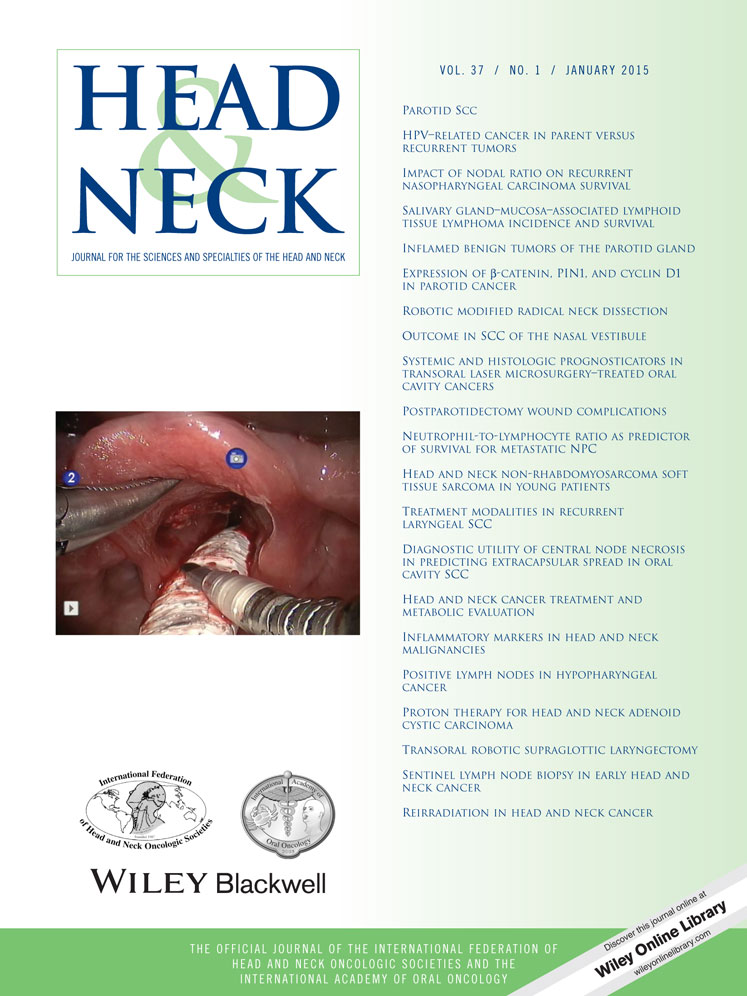Impact of extent of parotid resection on postoperative wound complications: A prospective study
ABSTRACT
Background
Sialocele and salivary fistula are common complications after parotidectomy. The purpose of the present study was to investigate whether extent of parotidectomy influences the incidence of these complications.
Methods
We conducted a prospective study of 66 consecutive parotidectomies. Cases undergoing skin or bone resection or flap reconstruction were excluded. Patients were divided into 2 groups based on extent of surgery: group 1 (extracapsular dissection or partial superficial parotidectomy); and group 2 (superficial parotidectomy or more extensive resection). The incidence of postoperative sialocele, salivary fistula, and facial weakness was studied.
Results
Eleven patients (16.7%) developed a sialocele, and 4 (6.1%) developed a salivary fistula. Group 1 had a significantly higher incidence of wound complications (p = .008), but a significantly lower incidence of facial weakness (p = .004).
Conclusion
Less extensive parotid resection seems to be associated with a higher incidence of postoperative sialocele and salivary fistula, but is also associated with less postoperative facial nerve dysfunction. © 2014 Wiley Periodicals, Inc. Head Neck 37: 64–68, 2015




